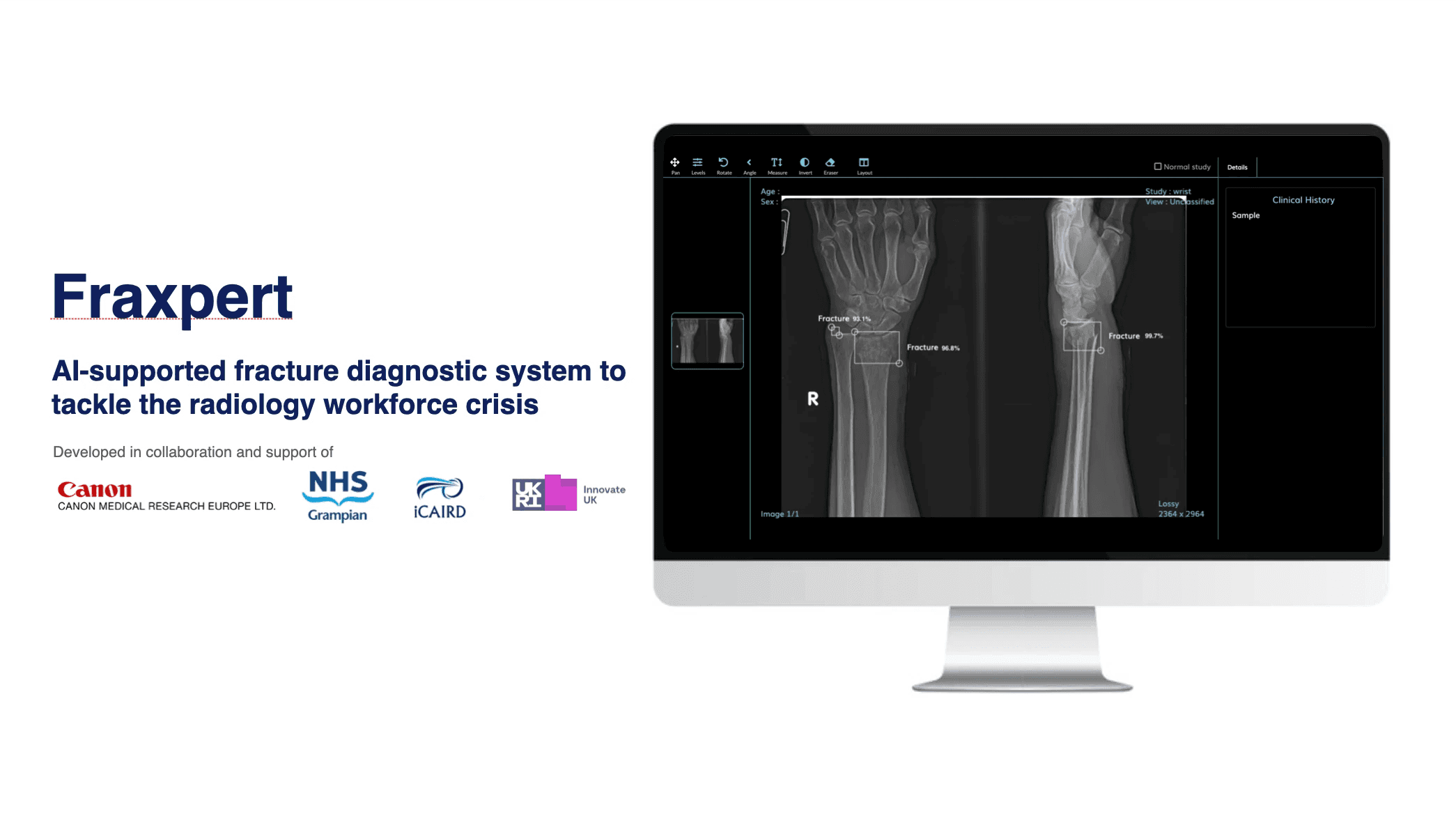Case Study - Improving NHS efficiencies with AI powered fracture detection systems
To develop artificial intelligence (AI) solutions to support fracture diagnosis in hospitals, helping to improve efficiency and patient care. NHS Grampian had identified two core opportunities to improve its service.
- Client
- NHS Grampian
- Year
- Service
- NHS Grampian

Our client
NHS Grampian is one of 14 regional health boards in Scotland. It is responsible for the planning and delivery of health care and services to the population of the north east.
In 2019, the board launched its first Small Business Research Initiative (SBRI) competition in collaboration with the Chief Scientists Office, Opportunity North East (ONE), Canon Medical Research Europe, the University of Aberdeen and iCAIRD. Our Seeai team was excited to respond.
Our challenge
To develop artificial intelligence (AI) solutions to support fracture diagnosis in hospitals, helping to improve efficiency and patient care.
NHS Grampian had identified two core opportunities to improve its service.
-
Reducing the distance for diagnosis People living in areas with smaller hospitals or clinics were having to make long trips to big city hospitals for detailed checks on fractures. This was especially true for wrists and ankle injuries. If there was a way to make these diagnostic services available closer to where patients live, it wouldn't just save them from unnecessary travel; it would also lighten the workload for the radiographers and make the whole healthcare system more efficient.
-
Breaking free from the bottleneck There's been a noticeable slowdown in getting accurate diagnoses for complex health issues, creating a bottleneck. Often, this meant patients had to come back for more detailed, time-consuming treatments that could have been minimised or even avoided with faster, earlier diagnosis. Improving how quickly and accurately we can assess patients right from the start is crucial for better patient care and outcomes.
Additionally, as fractures can be challenging to diagnose (particularly in emergency situations), Radiologists and A&E clinicians can often face exhausting workloads. As such, it was vital that any solutions created by Seeai helped to alleviate that pressure.
Our solution
Seeai worked in collaboration with NHS Grampian and Canon Medical Research Europe to develop Fraxpert, an AI-supported fracture diagnostic system to deliver fast and accurate plain film interpretation.
To make Fraxpert a reality, we collaborated with radiologists and doctors to create one of the largest hand-labelled datasets for fracture detection. Our AI algorithms were trained on this development dataset, created from 7,242 patients. It contained 12,926 abnormal images, 8,286 normal images, and 48,770 annotations of localised fractures. A separate group of 1,050 patient data for evaluation was also prepared.
The results
Fraxpert was able to bridge the gap between supply and demand for image diagnostic interpretation. Our AI algorithm achieved specialist-like performance with an accuracy of 95.67%, a recall of 95.05% and a precision of 97.24% on the test dataset.
Our ground-breaking AI solution also enabled:
Patients to receive their correct diagnosis at the first point of consultation
Radiologists to reduce the need to work outside their contracting hours and focus on more complex cases
- R&D
- Medical AI
- Computer Vision
This project was one of the first to use AI on patient data in this way. It’s really exciting to see how this kind of tool of could improve patient care and free up clinicians’ time.

Digital Research Team